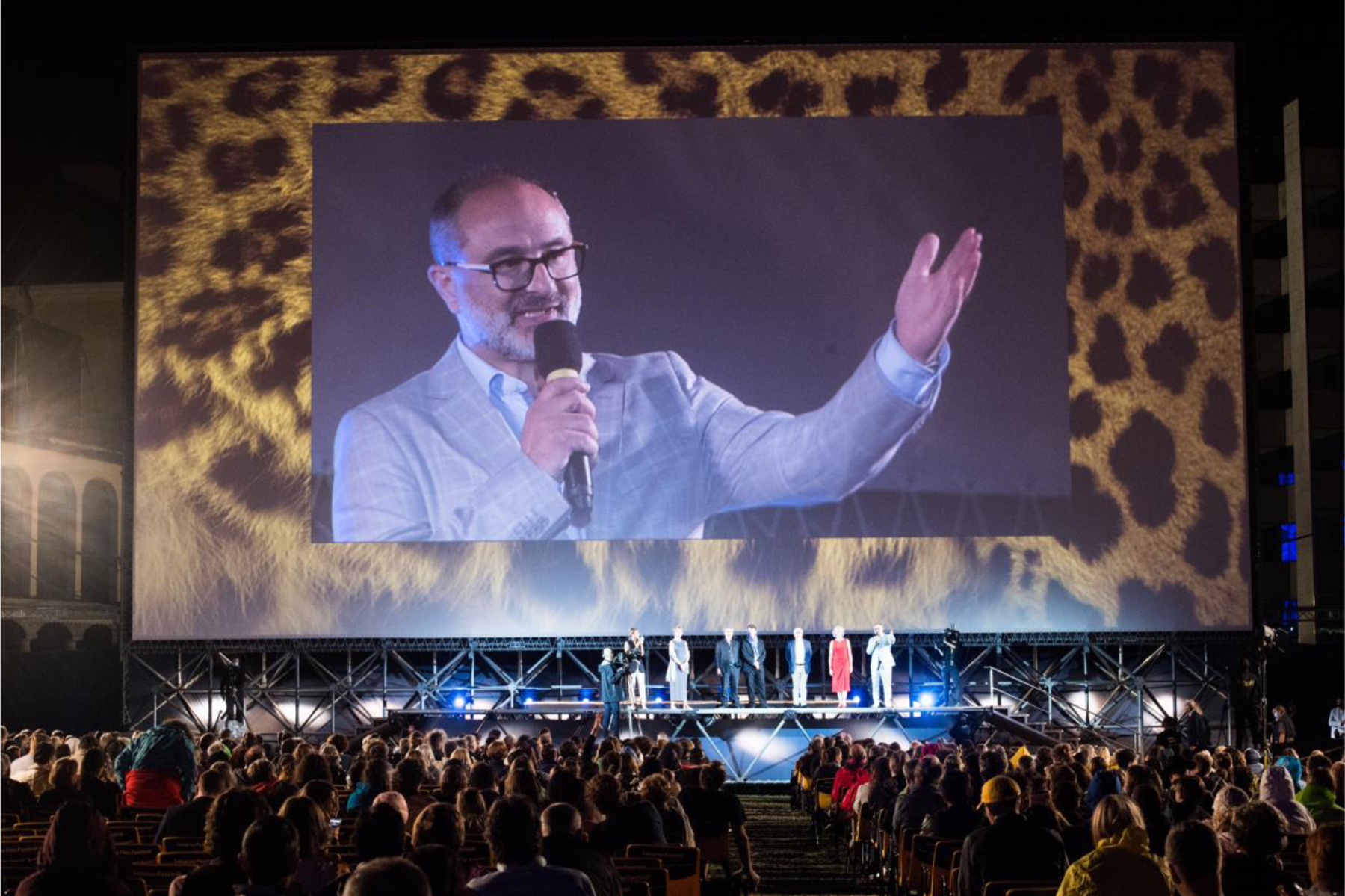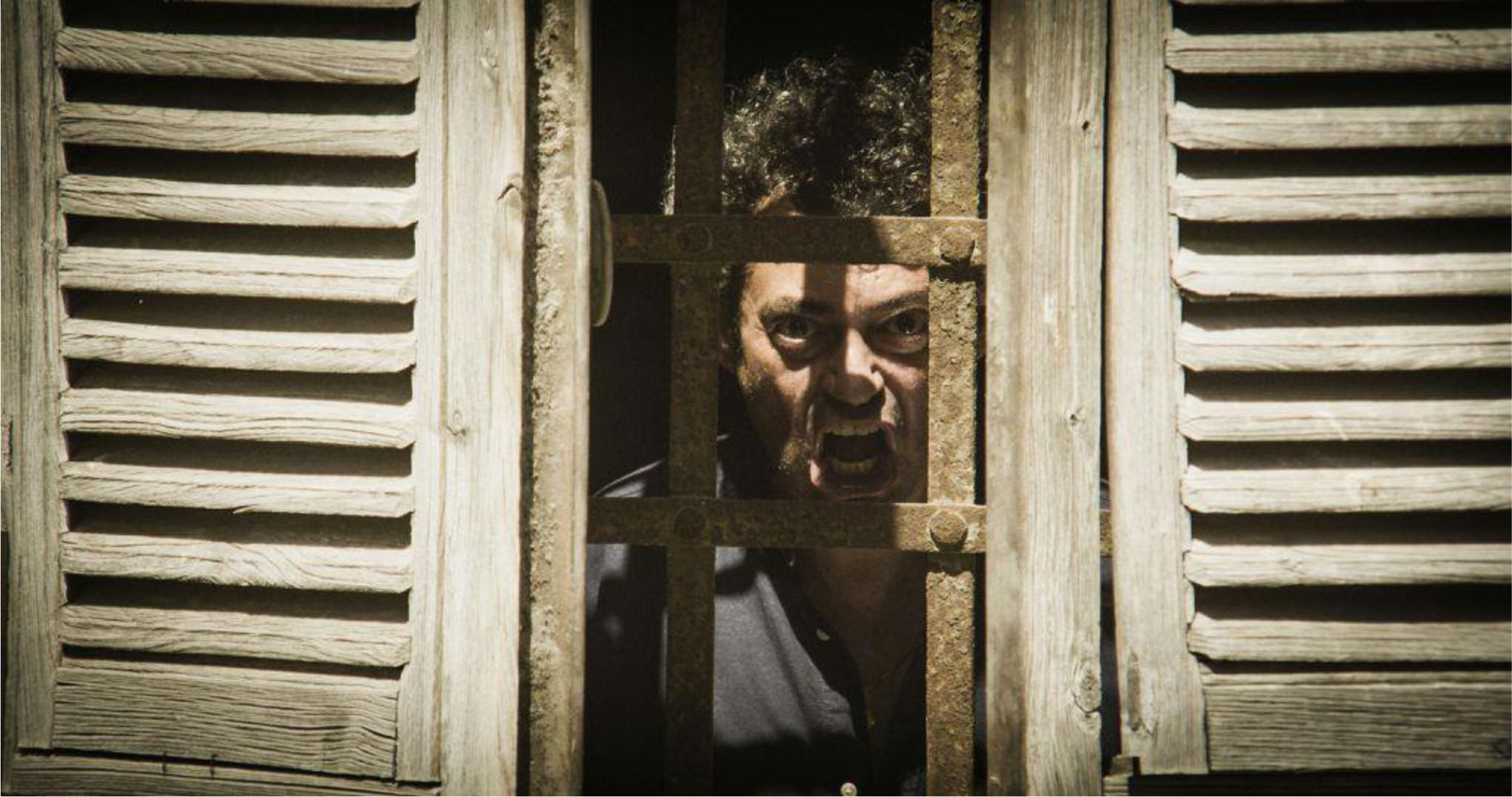A Popular Tactics
The funny thing with claiming (or reclaiming) cinema as a popular art is that ‘popular’ operates in these statements very much as a Rorschach test, revealing more about the person who uses the term than it does about the ‘people’ whose taste is being evoked. The obvious premise, here, is that what counts as popular is not a fixed quantity, not when it comes to cultural consumption: the line shifts, as John Fiske lucidly put it,1 like the front-line of a conflict, because ultimately that is what it defines: a conflict of taste and cultural capital, with all the attending inequalities of power and identity that can be easily imagined.
What to make, then, of Giona A. Nazzaro, newly appointed director of the Locarno Film Festival, and his declared intention to steer the event back into audience-friendly territories? Especially given that this particular appeal to the popular came after a rocky couple of years which saw, on top of the pandemic, the sudden and premature departure of his predecessor Lili Hinstin? (Hinstin herself had her work cut out for her when she took over in 2018 from long time helmer Carlo Chatrian, whose appointment to the Berlinale left some very big shoes to fill.) For one thing, Nazzaro’s stance reveals him as a shrewd tactician. Locarno, sandwiched between Cannes and Venice, with a long-established reputation for independent and exploratory programming, has become over the years an increasingly schizophrenic animal. There is, on the one hand, the crowd-pleasing fare of the ‘Piazza Grande’: en-plein-air screenings in the town’s main square, sprinkled with (variously unconvincing) attempts at alpine red-carpet glamour. On the other hand is the cinephile ethos of the international competition: an ethos doubly reinforced by the sidebars, the forward-looking ‘Cineasti del Presente’ and the experimental Wunderkammer which was the (now defunct) ‘Signs of Life’ selection.
As far as balancing acts go, it was clear to all that the Swiss wildcat was walking a fine line. Last year’s resignation of Lili Hinstin, for which ‘diverging strategic views’ with the management were cited, was a telling sign that the situation had come to a head. In a sense, then, Nazzaro’s vision of an all-embracing, ‘free and open’ festival seems to be the only viable route. Tactically, as an attempt to project a unified vision and bring post-pandemic audiences back to the festival. But also strategically, as an expression of Nazzaro’s belief in the cinema as a ‘vital’ art in which disparate languages and social forces intersect and occasionally conflict across all strata of culture and taste.2
What lies behind the rhetoric here is a notion of popular taste that is not simply synonym with majoritarian taste. As for Fiske, what matters is conflict: the intersection and friction between a hegemonic top and a resistant down. To claim that a festival ought to be ‘open’ means, if I read well across the lines, that it should be open to those tastes and texts that challenge or resist or otherwise evade the dominant paradigm. It also means, by implication, that the cinema is still the site where such an encounter or clash takes place—and that is no small thing.
Both tactically and strategically, then, Nazzaro’s stance makes sense. Some might have turned up their noses, but I personally feel a certain sympathy for this notion of the popular. Intellectually, however, I do have several reservations. Leaving aside the fact that prices in Locarno in August are anything but audience-friendly, I am not convinced that a popular cinema construed along these lines still exists to begin with. It’s not just that the practices and profiles of cultural consumption have changed significantly in the last 15 years. The dynamics of power underlying those practices have shifted too. New lines have been drawn: social groups that used to express recognizably ‘popular’ patterns of consumption (patterns, that is, whose interests and pleasures could be construed as marginal and relatively self-directed) are now firmly at the center of producers’ radars and agendas. At the same time, the medium itself has shifted its center of gravity, to the point where labels like mainstream, independent, art-house, genre, etc., ought to be entirely re-mapped if they are to mean anything. Films like Beckett and Ida Red (both screened in Piazza Grande) do, for example, nod a great deal to the 1970s wave of politically-progressive-yet-popular genre cinema, but I remain to be convinced that the actual cultural work they perform is anywhere near what films like The Long Goodbye or Get Carter did, just to name the first that come to mind.
Put otherwise: the idea that contemporary ‘audience-friendly’ cinema should, by virtue of its friendliness, be more vital and relevant than its supposedly elite counterpart strikes me as dubious. A brilliant case in point, here, is Daniele Misischia’s The Crypt Monster (Out of Competition). On its face, a friendly & fond homage to 1980s teenage flicks, conceived in the afterglow of Stranger Things but with an eye towards the wholly Italian phenomenon of popular horror comics (the plot pivots around a thinly disguised version of Tiziano Sclavi’s Dylan Dog, whose first 100 issues are a must-read for horror and comics buffs alike). At a closer inspection, however, the film reveals a whole other hidden agenda. Set in Bobbio, a town that has become something of a private turf for former angry young man and now aging maestro Marco Bellocchio, The Crypt Monster dishes out shot after shot of incongruously peaceful hillsides and sun-kissed landscapes, until the whole thing starts looking very much like an insufferably touristic ploy, rather than an attempt to reveal and enjoy the complexity of the tradition it evokes. Harmless fun it might be, but then there is always complicity in such harmlessness.
Which is not to say (in passing) that art-house films always avoid the pratfalls of performativity. Take Ghassan Salhab’s The River (International Competition), a film so grotesquely unaware of its pretension that one almost suspects Nazzaro to have planted it in the programme just so he could turn to the aforementioned nose-turners and say: is this what you are missing? Unnamed Man and Woman meandering in an unspecified Middle-Eastern forest, exchanging lines of dialogue so dense and undecipherable that the whole film ends up feeling like a heavy-handed absurdist farce?
The impression, at least judging from this 2021 edition, is that a few course corrections will have to be made before the selection comes to embody that balance between curatorial sensibility and audiences’ expectations that all festivals strive for. Having said that, those who fear a slow drift into the mainstream would be hard-pressed to justify their concerns at this stage. For one thing, Locarno appears set to continue pursuing its commitment to emerging cinemas and film cultures beyond programming, for example by fostering critical energies (the Critics Academy) and diverse film-making (the Open Doors project). Moreover, spanning across the entire line-up one could find, even this year, more than a few lucky underdogs: films that, while certainly not audience-friendly and ‘popular’ in a straightforward manner, had enough grit to redeem the programme (and Nazzaro’s vision with it) from both triviality and pretension.
Bodies and Carnivals
Among those films (or at least among those that caught my attention) some recognizable themes seem to coalesce: inscrutable collective performances, more or less religious, and intensely embodied narratives, often adrift in a meta-historical, suspended sort of temporality.
Let us turn to Araceli Lemos’ debut Holy Emy as a first example. Compared to other recent Lanthimos-esque titles, this one is less ferocious absurdism and more a gently observed portrait of girlhood. Two Filipino sisters living in Athens, one gifted with mysterious healing powers, are forced to rely on each other as they face a largely hostile landscape of cult-like Catholic practices among their own expat community, and manipulative exploitation at the hands of the locals. In spite of the supernatural and grotesque elements, the tone remains largely intimate, which is all the more surprising considering how bleak the premises (and outcomes) of the plot are.
It’s on the religious theme, however, that I want to focus. In dealing with rituals and bodily miracles, Holy Emy strikes a tone, roughly carnevalesque, which repeatedly returns in the 2021 line-up: from the lunatic parade in Carlo Francisco Manatad’s Whether The Weather is Fine (Cineasti del presente), in which an extreme weather disaster turns into a profane and commodified apocalypse, through the dark humor of Srđan Dragojević’s Heavens Above (International Competition), a satire after the mold of Good Soldier Svejk, in which modern-day saints turn out to be less than saintly, and ending with the tragic history of Arami Ullón’s Nothing But The Sun (Panorama Suisse), a work of auto-ethnography centered on an oral historian, Mateo, and his people, the Ayoreo of Paraguay, who in the 1990s were forced by religious missionaries to abandon their forest and their shamanic practices in exchange for a largely performative version of Christianity.
Then again, perhaps it is not so much religion per se what is at stake. Rather, it is religion as a structure of belonging, a way to hold on to a cosmic order that’s coming undone. As I write these lines, not too far from Glasgow, where only a few weeks ago the leaders of the world gathered to take (or rather avoid taking) decisions that might determine the future of the species on this planet, it is not difficult to imagine why this concern agitates the zeitgeist like a millenarian ghost. As things crumble, what remains is an increasingly meaningless, if not downright absurd collective performance: most obviously in Manatad’s disaster-stricken film and Holy Emy, but traces of the same motif can also be found and elsewhere in the programme: I think of the paranormal society’s meetings in Chema Garcia Ibarra’s The Sacred Spirit, (International Competition), for example.
Running like a thread through the programme, this theme of carnevalesque collapse is matched, interestingly, by a recurring focus on girlhood as a self-contained, inward-oriented shell. Again, Lemos’ film offers a strong example: especially the repeated sequences in the lavatory, in which the two sisters groom each other, and bodily fluids and surfaces seem to occupy the frame as a dark matter, at once familiar and inscrutable (see Fig. 2).
An even better example is Gerda, perhaps one of the best titles of the International Competition. Set in a desolate town in the middle of a post-Soviet nowhere, the film sketches the life of the titular Gerda, a young woman who takes social studies classes, makes ends meet by working as a pole dancer, and takes care of her mentally ill mother. Director Natalya Kudryashova offsets the squalor of the setting with elegantly composed shots, which eschew documentary realism in favor of a formal transcendence of sorts. Plato is explicitly name-checked, as is an entirely opposing philosophy of embodied and inescapable materialism, thanks to Gerda’s quasi-boyfriend, a graveyard-keeper-turned-drug-seller who alternates psychotropic silences with musings on death. It is not quite as grim as it sounds: rather, the overall quality is that of a dark fable, in which the dominant theme is escape (the impossibility thereof): of souls from bodies, either through drugs or death or ecstasy, and escape more generally. There are social undertones too: in a formidable subplot, Gerda conducts a survey among her neighbors for a school assignment. Her interviews culminate in a heart-rending dinner party with an older woman, who daydreams of leaving the town for some exotic locale, the name of which she once knew, but has now forgotten.
This emphasis on bodies and transcendence returns, although in a rather different manner, in L’eté l’éternité (International Competition). Here, director Émilie Aussel combines a distinctively theatrical approach with an equally unmistakable fascination with youth as a screen of projections. An ensemble cast of French teenagers is traumatized by the accidental death of one of them while on a summer holiday in Marseilles. As the plot unfolds, Aussel interrupts the diegesis with monologues, delivered straight to the camera, in which one by one the characters address lost figures from their past lives. The conceit is straight out of theater school, but, luckily for Aussel, it does not entirely tank the film.
What saves the picture, however, is not so much the character work, but rather the opposite: the transfiguration of these young men and women into emblems of a time lost. Early on, before tragedy strikes, a random romantic encounter on the dance floor leads to a conversation between the protagonist, Lise, and her ill-fated best friend Lola. “We were like gods,” the latter muses, as she recounts the midnight swim she took with her one-night paramour. Indeed: stripped of its lived and historical actuality, youth emerges here as a sun-soaked, semi-divine stage of life, imbued with the nostalgia and the memories of both filmmaker and viewers. A time of grace, a time before the fall: before death, or loss more generally, when life is stuff of the imagination, and, therefore, of cinema. As another character recalls in her monologue, there are experiences that are ‘seen in films’, and longed for, before they are lived—if they ever are.
Ultimately, then, Aussel gets the better of her own theatrical sensibilities by letting her young actors exist on the frame as universal types rather than individuals. If Lemos turned the body into an inscrutable, intimate while darkly threatening matter, Aussel turns it into a collective memory, a surface upon which to reminisce and project, transforming what would have been a rather over-scripted exercise into a delicate reverie de jeunesse.
Stories and Histories
Aussel’s reverie, it should be noted, is very much outside historical time. The titular summer of L’eté l’éternité could be the one of 1992 as plausibly as that of 2009: the setting is noticeably ambiguous. Part of it has to do with Aussel’s disregard for the individual: youth, as I mentioned, is an artifact of our collective (adult) memory.
Yet the same reticence towards historical markers can be found in another film, a debut feature directed by Kit Zauhar, a young filmmaker fresh out of film school. Even more notable, here, is the fact that Actual People (Cineasti del presente) purports to be a mumblecore film, centering on the actual experiences of an Asian American of mixed descent, Riley, during her final weeks of college in New York City. I say ‘purport’ because, despite the slice-of-life structure and the voicy naturalism of dialogues, it slowly becomes apparent that Zauhar is not attempting a generational portrait in the conventional sense. As Riley reluctantly faces the prospect of entering adult life, and the attendant threat of becoming a ‘real person’, the film coyly retreats into what could be best described as an early 2000s fantasy: a world where smartphones are barely present and human interactions are modeled after TV scripts. There is a scene in which Riley’s flatmate, having thrown her out, begins to apologize, only to admit that he only started that sentence because ‘it sounded like something people say’.
Ultimately, Zauhar packages a film that’s much cleverer than it looks: under the pretense of generational authenticity, Actual People deals with performative adulthood by drawing on performative naturalism, mobilizing, that is, the stylistic toolbox of a genre that we read as immediate and ‘authentic’ only because it was so some twenty years ago—certainly not now. The occasional inserts (see Fig. 4), in which social media videos from the characters’ past interrupt the flow of the narrative and punctuate the frame, are the only (subtle) nod to the film’s temporal conceit, reminding us of how actual people in 2021 mediate their memories and experiences through constant performance: but such is our familiarity with those technologies that it’s all too easy to misinterpret the inserts as background noise, rather than recognize them as the telltale signs that they are.
If Actual People still manages to end on a note of tentative hope, as Riley lets go of a flimsy romantic pursuit and recommits to her studies, the same cannot be said for Corrado Augias’ The Giants, another gem from the International Competition. Developed in less than a month and half, the film is a nervous masterpiece, albeit one brimming with dark energy.
Indeed, and returning for a moment to the discussion with which I opened this report, The Giants might be the one film in the programme that fully and truly fulfill Nazzaro’s take on the popular as conflictual, with its unbridled and unabashedly ‘cult’ energy exploding into a bleak social allegory. The ritual theme reappears again too: at the center of the plot is a group of men who, in the Sardinian countryside, meet in a villa for a planned weekend of self-destructive drug-taking. The situation quickly spirals out of control, as violence predictably ensues.
Interestingly, there is no trace here of the other theme I followed. Women are noticeably absent from this picture: rejected, unattainable or already lost. Their absence casts a negative shadow onto the male bodies that populate the film: compared to the viscerally embodied characters from the other films I mentioned in this report, Augias’ men are hollowed out husks, consumed with a death drive that makes them alien to both the viewers and themselves.
The tonal range is remarkable, combining deadpan comedy, outbursts of rage and moments of Kammerspiel-like intimacy. As the plot unfurls towards the final apotheosis of violence, the proceedings appear more and more pre-determined, and one is tempted to think of Tarantino’s analytical dissection of genre tropes. Then again, the energy here is more raw, the nihilism more corrosive and hopeless: better perhaps to think of Fists in the Pocket, to mention again Bellocchio (when he still was an angry young man) or Bertolucci’s Before the Revolution. Except for Augias’ characters there is no revolution in sight: only pointless silence, and a certain poetical bitterness about the failed promises of life, an undertone that blends Mayakovsky with Leopardi.
It is a bleak, dark prophecy that fully deserves the international distribution it most certainly will not have. It is, also, a perfect allegory for the times we live in: self-destructive tendencies barely contained by increasingly performative rituals, a self-enclosed stage from which there is no escape other than narcissist yearnings and past promises betrayed.
Here’s hoping someone finds a way out before it’s too late.
Author Biography:
PM Cicchetti is a film writer and scholar based between Bologna and Edinburgh. His film criticism has appeared in Reverse Shot, Fandor Keyframe, Filmidee, Film Explorer and other international publications. He has held lecturing posts at various universities in Scotland since 2012. His research focuses on the semiotics of culture: his doctoral thesis studied the legacy of Puritan discourse and Western mythologies in American cinema during the early years of the Obama presidency.
Notes
- John Fiske, ‘TV: Re‐situating the Popular in the People’, Continuum 1, no. 2 (January 1988): 56–66, https://doi.org/10.1080/10304318809359337. ⮭
- For a full account of the director’s stance on the matter, see his 2014 report for Micromega: Giona A. Nazzaro, Il conflitto delle idee: al cinema con MicroMega, Bietti heterotopia 14 (Milan: Bietti, 2014). ⮭





